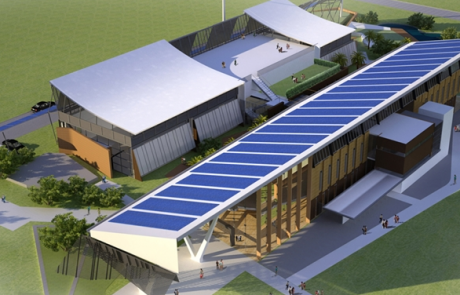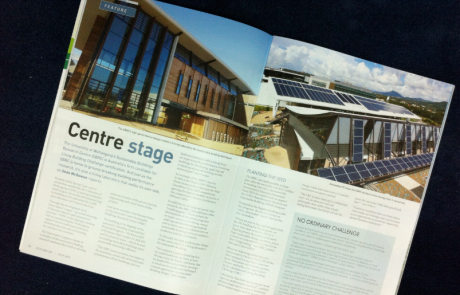As part of the Innovation Campus at the University of Wollongong, the SBRC is the flagship of the university’s Building Sustainability Research Program, which focuses on making Australian buildings more sustainable and energy efficient.
As part of the international Living Building Challenge, one of the targets of the SBRC is to meet a performance target of net-zero energy, water and waste over a 12 month continuous occupancy period. For the SBRC, this means that over a course of a year, it must produce more energy than it consumes, using only onsite renewables without the use of combustion.
“To further diminish the energy footprint of the SBRC building, a ground-source heat pump (GSHP) system was adopted, and will become a significant research facility in its own right.
Designed to operate at much higher coefficient of performance (CoP) than a traditional chiller system, the 40kW ystem (2 x 20kW GSHPs) is coupled to the in-slab hydronic system.
“The system can be automatically configured to run the water from the ground-source heat exchanger directly through the floor slab when it is energetically advantageous,” says Professor Paul Cooper.
The ground-source heat exchanger employed at SBRC is a mix of differently configured pipework systems. It features three 90m vertical bores and two horizontal heat exchanger fields (or pit exchangers) buried about 1.5m below ground level under the SBRC’s urban agriculture gardens.
In addition, 12 vertical temperature-monitoring bores have been installed in the heat exchanger field, together with moisture sensors, to monitor the system’s long-term performance characteristics.
A conventional air-cooled chiller has also been installed to provide additional capacity when required.”
[Ecolibrium, July 14]


